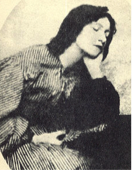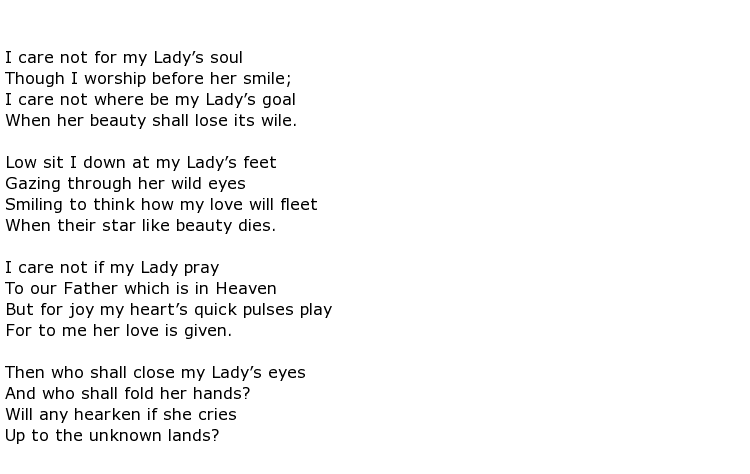 Elizabeth Siddal, often known simply as Lizzie Siddal, was a 19th century poet and artist. She was also an artist’s model, especially for her husband Dante Gabriel Rossetti. He used her in many of his paintings but her most famous sitting was for Ophelia, painted by Sir John Everett Millais. During the 1850s, when her own paintings were patronised by John Ruskin, she wrote a number of poems, often with darkly romantic themes of lost or unattainable love.
Elizabeth Siddal, often known simply as Lizzie Siddal, was a 19th century poet and artist. She was also an artist’s model, especially for her husband Dante Gabriel Rossetti. He used her in many of his paintings but her most famous sitting was for Ophelia, painted by Sir John Everett Millais. During the 1850s, when her own paintings were patronised by John Ruskin, she wrote a number of poems, often with darkly romantic themes of lost or unattainable love.
She was born Elizabeth Eleanor Siddall on the 25th July 1829 in Hatton Garden, London and named after her mother, although the spelling of her surname was changed to Siddal later when she met Rosseti. Her father claimed links to nobility in his ancestry and ran a cutlery making business. Her education was pretty sparse but she did manage to learn to read and write. Her early interest in poetry was inspired by the accidental discovery of one of Tennyson’s poems; it was on a piece of newspaper that had been used to wrap butter.
As she developed into a tall young woman with strikingly copper coloured long hair she was much in demand as an artist’s model and sat for a number of artists such as Walter Deverell and John Millais. She featured in many classical poses, often based on Shakespearian plays, and it was perhaps during one of these sittings that her health took a turn for the worse and never recovered. In 1852 she was required to represent the drowning Ophelia by floating in a bathtub full to the brim with water for a considerable amount of time by Millais. She became ill, possibly suffering with pneumonia, because the artist forgot to re-heat the water and Siddal was in such a dream-like state that she didn’t notice how cold she was.
It is believed that she was addicted to a popular narcotic of that time called laudanum, often to ward off depression, while another theory is that she may have slowly poisoned herself with a substance called “Fowler’s Solution” which contained arsenic. It was thought to be a complexion enhancing treatment. It could, of course, be a combination of all of these things that contributed to her early tragic death though some sources claim that she took an overdose of laudanum which ultimately killed her.
Evidence suggests that she was a tortured soul throughout her life and the imagery portrayed in both her own paintings and those painted by others, of her, would tend to support that theory. Her writing was often similarly dark and brooding and here is a typical example. It is a poem called The Lust of the Eyes in which the author is grieving the loss of a loved one:

The literary critic William Gaunt wrote of her work:

Her husband’s love for her bordered on the obsessive and it is believed that he painted her thousands of times. She and Rossetti married in 1860 but it would last for only two years, although they had been together for over ten years before that. At the time of the simple wedding in Hastings, Siddal was extremely weak and had to be carried into the ceremony. When she died he was so overcome with grief that he placed the original manuscripts of his own poetry in the coffin with her although later on he had the body exhumed so that he could recover the papers.
Elizabeth Siddal died at home in Chatham Place, London on the 11th February 1862 at the very young age of 32. There were suggestions at the time that she had committed suicide but this was hushed up for fear of bringing scandal onto the heads of the Rossetti family. Her overdose of laudanum could have been accidental as she was in a state of acute depression at the time.

